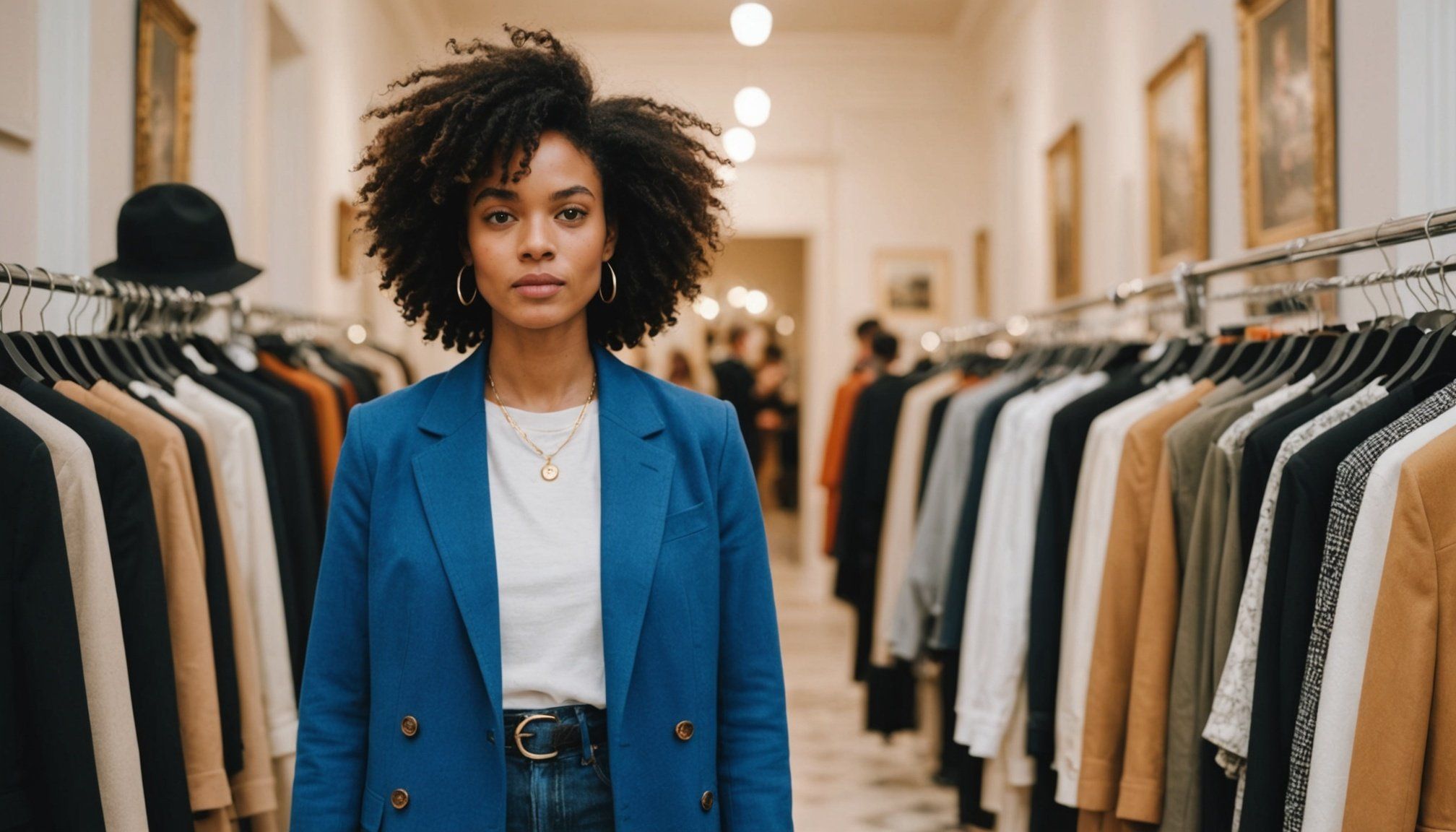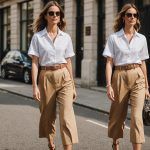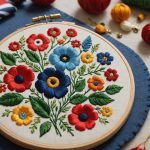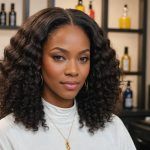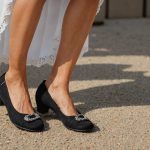Understanding Personal Aesthetic
When we talk about a personal aesthetic, it refers to the unique style and visual representation that an individual chooses to express themselves. It’s significant in fashion because it forms the foundation of one’s fashion identity. Essentially, your personal aesthetic is a reflection of who you are and how you want to be perceived by the world.
So, how does personal identity shape fashion choices? The answer lies in the intersection of culture, personal beliefs, and individual preferences. Each of these elements influences how someone might decide what to wear, thus playing a role in defining their individual style.
Also read : Discover chic footwear with exceptional arch support for ultimate comfort at any event
Moreover, the role of personal values is essential in developing a cohesive aesthetic. Values such as sustainability, comfort, or luxury can heavily sway fashion selections, informing whether a person opts for eco-friendly brands, casual attire, or high-end embellishments. Having a set of core values helps centralise one’s wardrobe choices and creates consistency across their fashion identity.
Overall, understanding your personal aesthetic provides clarity and purpose for clothing choices. Whether influenced by cultural heritage, life experiences, or personal beliefs, these factors contribute to a comprehensive and expressive fashion identity.
Have you seen this : Vital strategies for caring for and safeguarding delicate eyes
Aligning Values with Fashion Choices
In today’s diverse fashion landscape, aligning values in fashion with personal style can be both empowering and rewarding. Personal beliefs often drive clothing selections, guiding individuals towards choices that reflect their core principles. For instance, someone prioritizing sustainability may gravitate towards brands with ethical practices, considering the environmental impact of their attire.
Ethical fashion brands have made it easier for consumers to express their values. Patagonia and Everlane, for example, are renowned for their commitment to eco-friendly materials and transparent production processes. Such brands not only offer stylish apparel but also allow wearers to support sustainable practices. This alignment of fashion with values ensures that style choices are meaningful and responsible.
Integrating personal beliefs into everyday fashion involves strategic adjustments. Begin by auditing your wardrobe to identify items that align with your values. Look for certifications like Fair Trade or GOTS (Global Organic Textile Standard) to ensure ethical fashion practices. Selecting brands committed to ethical production and opting for second-hand or vintage garments are excellent strategies.
By understanding the impact of personal values on fashion and making informed choices, consumers can enjoy a wardrobe that speaks to both their style and convictions.
Techniques for Identifying Your Personal Aesthetic
Embarking on a journey to identify your personal aesthetic can be both exciting and daunting. It involves a unique blend of self-reflection, visual inspiration, and acknowledging external influences.
Self-Reflection and Assessment
Start by considering your likes and dislikes to perform an effective aesthetic assessment. Reflect on what draws you to certain colours, patterns, and textures. Asking questions such as, “What environments make me feel at ease?” helps to uncover personal preferences. Take stock of your current wardrobe. Identify pieces that resonate with your desired style – this exercise is a cornerstone in the style discovery process.
Visual Inspiration and Mood Boards
Gathering visual ideas is fundamental. Create mood boards by collating images from fashion magazines, online platforms like Pinterest or Instagram, and art you admire. This practice not only hones in on specific preferences but also provides a visual framework for future fashion curation. By observing patterns in these collections, you can begin crafting a coherent personal aesthetic.
Analyzing Influences in Fashion
Consider cultural, media, and peer influences when assessing personal style. Culture provides a backdrop, while media shapes trends. Peers often impact daily choices. Understanding these elements aids in a comprehensive aesthetic assessment and fosters a refined sense of style. Engage with these influences thoughtfully to build upon your unique fashion identity.
Curating a Wardrobe that Reflects Your Aesthetic
Creating a wardrobe that aligns with your personal style involves wardrobe curation and thoughtful clothing selection. Begin by decluttering your current wardrobe, a crucial step to not only organise but also to re-evaluate your personal branding. Remove items you no longer wear or that do not suit your style. This allows you to focus on pieces that reflect your aesthetic.
Next, consider a versatile and sustainable approach. Choose timeless pieces that can be mixed and matched. Aim to select materials and brands that prioritise sustainability, contributing to environmental conservation. This ensures longevity and reduces waste.
Incorporate a strategy for making informed purchasing decisions. Evaluate each potential addition by considering its compatibility with your existing collection and how frequently it will be worn. Ask yourself, “Does this piece enhance my personal style?” By focusing on quality over quantity, you’ll find your wardrobe to be more meaningful and less cluttered.
Through these steps, you will cultivate a curated wardrobe that authentically represents your aesthetic while supporting practical and sustainable fashion choices. Embrace the process as an ongoing journey towards a wardrobe that truly embodies your individuality.
Practical Examples and Visual Inspiration
Fashion serves as a vibrant medium for personal expression, and inspiration can be found in many fashion examples from diverse styles and aesthetics. Popular culture showcases a plethora of these, from streetwear to haute couture. Think of the rebellious yet chic street fashion in cities like Tokyo and New York, or the timeless elegance often seen on London’s runways. Each style tells a story, emphasizing individuality and personality.
Real-life examples further embody how one can express personal aesthetics. Social media platforms abound with such imagery, offering a window into everyday fashion enthusiasts’ lives. These individuals, showcasing unique styles, merge trends with their own flair, providing endless visual inspiration.
For those looking to develop their personal style, consider these outfit ideas:
- Mix bold patterns with classic silhouettes for a balanced look.
- Use monochrome palettes to make a sleek, modern statement.
- Embrace vintage pieces to add nostalgic flair to contemporary outfits.
Styling outfits can become an art in itself, allowing you to reflect your identity through clothing choices. By observing these practical examples and drawing on visual inspiration, one can craft a wardrobe that speaks volumes about who they are.
Resources and Tools for Further Exploration
Navigating the ever-evolving world of fashion can feel overwhelming. Fortunately, a wealth of fashion resources are available to help individuals develop their unique style. One way to start exploring your personal aesthetic is by diving into engaging books and articles that delve into fashion theories and histories. These resources can be invaluable in offering a comprehensive understanding of style evolution and personal expression.
Online style quizzes and assessments have become popular tools for fashion discovery. These platforms use interactive methods to pinpoint individual preferences and stylistic inclinations. Quizzes often suggest styles or themes that align with one’s personality, making them an engaging starting point for those venturing into fashion exploration or looking to update their wardrobe.
To further tailor your fashion journey, seek expert opinions from well-regarded voices in the industry. Insights from fashion experts can provide clarity on developing and refining a personal brand, helping you to make informed decisions about your wardrobe. Experts often share trends, tips, and nuanced advice through blogs and interviews, enriching your understanding and connection to personal style.

